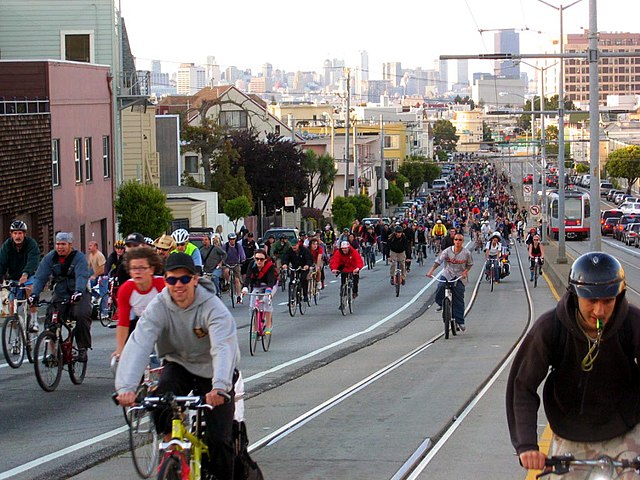A low-emission zone (LEZ) is a defined area where access by some polluting vehicles is restricted or deterred with the aim of improving air quality. This may favour vehicles such as bicycles, micromobility vehicles, (certain) alternative fuel vehicles, hybrid electric vehicles, plug-in hybrids, and zero-emission vehicles such as all-electric vehicles.
Sign for the Ultra Low Emission Zone (ULEZ) in London (left)
A zero-emission vehicle, or ZEV, is a vehicle that does not emit exhaust gas or other pollutants from the onboard source of power. The California definition also adds that this includes under any and all possible operational modes and conditions. This is because under cold-start conditions for example, internal combustion engines tend to produce the maximum amount of pollutants. In a number of countries and states, transport is cited as the main source of greenhouse gases (GHG) and other pollutants. The desire to reduce this is thus politically strong.
Critical Mass cyclists, San Francisco, April 29, 2005, and Muni Metro electric tram on J Church line
The Nissan Leaf electric car is a zero emission vehicle (ZEV).
The Indian REVA electric car is a zero emissions vehicle (ZEV).
The Honda FCX Clarity, launched in 2008, is a fuel cell hydrogen vehicle compliant with the ZEV standard and sold in Japan and in the U.S. (only in Los Angeles).





